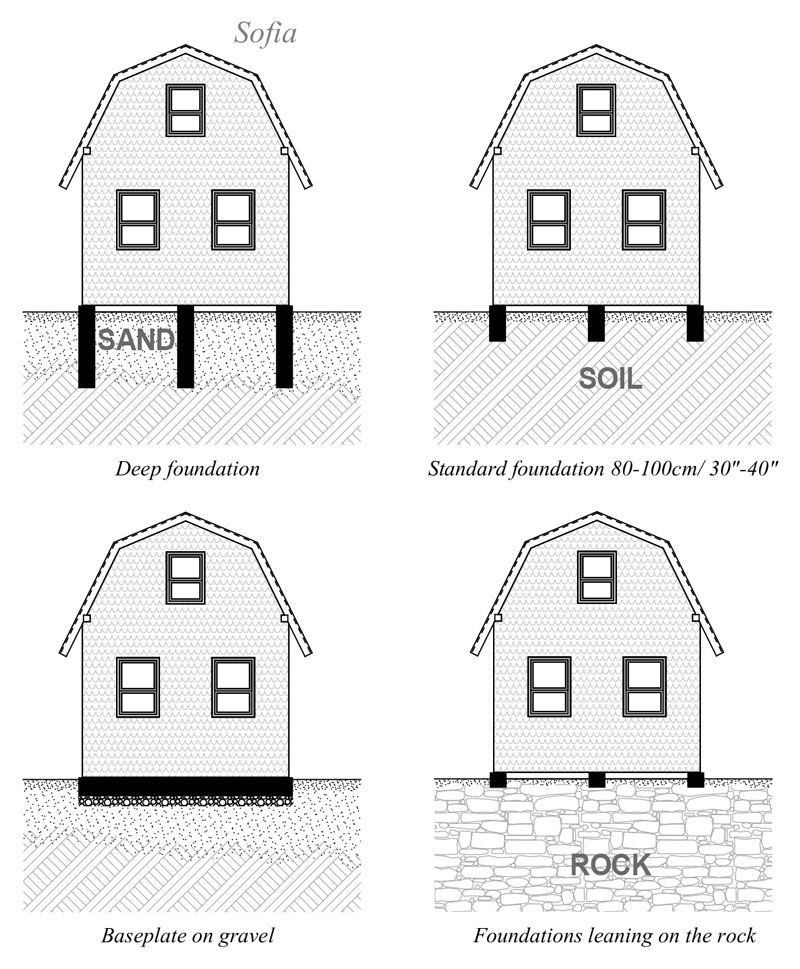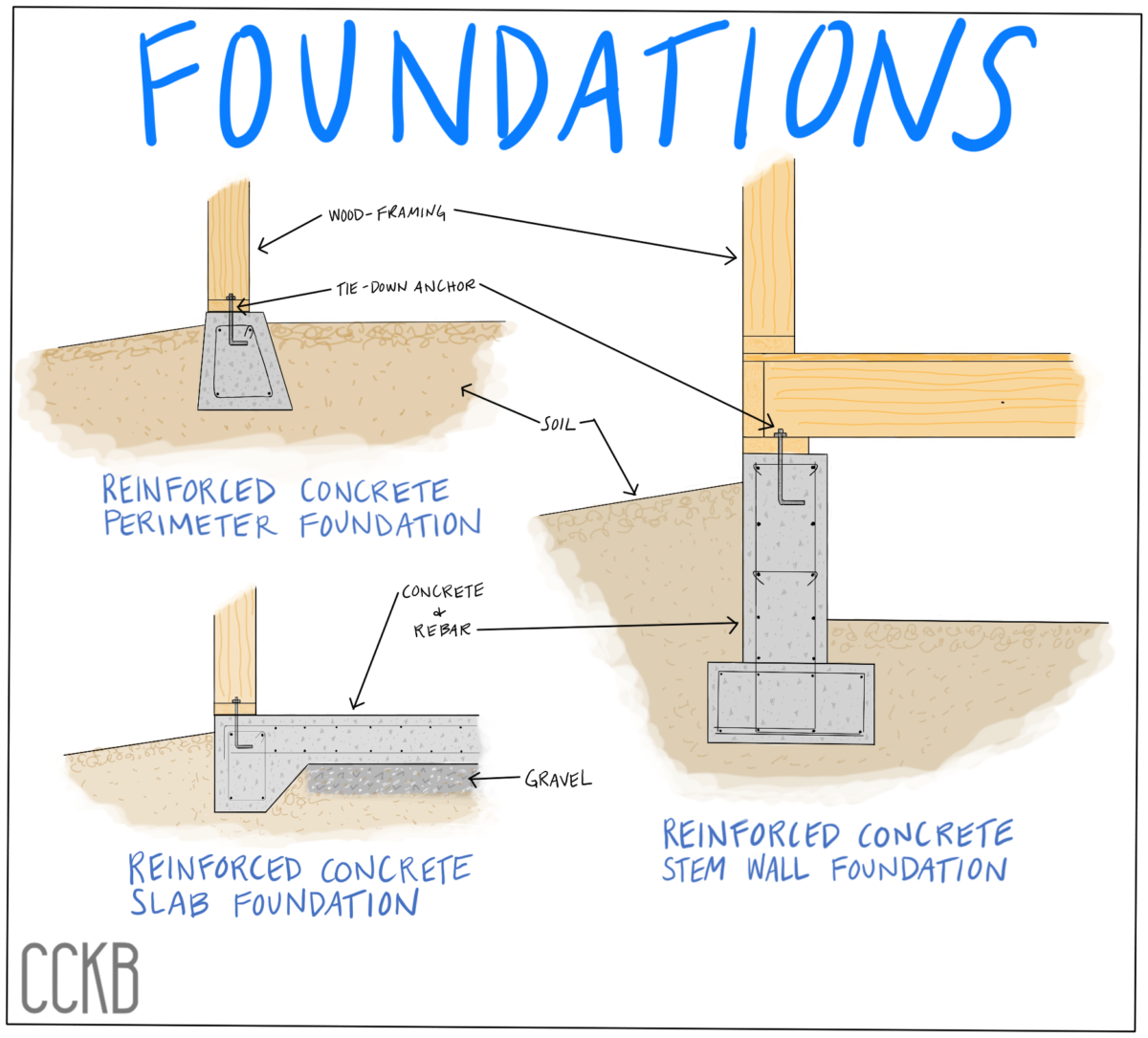Table Of Content

If you are building from the ground up, you can choose the right foundation type for your home. The deeper your contractor must dig, the more expensive the foundation project will be. But in many climates, you will need to have a deep foundation — below the frost line — to protect your home and its structural integrity. For manufactured home installations, a different type of pier and beam foundation is useful (and often affordable). First, anchors go into the ground to hold against wind and other weather. Then, outriggers and cross-members go on to add extra weather resistance.
What is the most common foundation type?
These 2×4 or 2×6 framed walls are usually found in crawl space homes with sloped lots. This construction method saves builders from using more concrete to build up the crawl space walls. If these walls are not properly braced, the entire unit can collapse during periods of stress.
Basement Foundation (Two Types)
This loan may not be available for all credit types, and not all service providers in the Quicken Loans network offer this or other products with interest-only options. The information that we provide is from companies which Quicken Loans and its partners may receive compensation. This compensation may influence the selection, appearance, and order of appearance on this site.
Deck Footing and Foundation Options For You To Consider
There are three main foundation types; basement, crawlspace and concrete slab. Every house is built on a foundation, but not every house is built on the same foundation—some are stronger, while others are more affordable. Some materials are common, like concrete, while stone and wood were historically used in older homes. The home foundation type used is based on house design, geographical location and climate, soil and moisture conditions, and the project budget. Older homes built before 1960 may have cripple walls that separate your ground floor joists from your concrete foundation.
10 Most Common House Spiders - How to Identify a Dangerous Spider - Prevention Magazine
10 Most Common House Spiders - How to Identify a Dangerous Spider.
Posted: Tue, 19 Mar 2024 07:00:00 GMT [source]
Plumb and Level Foundation Walls

The most common foundation types for cold climates are the beam foundation and the slab foundation. The difference is that on a beam foundation, the weight of the house is laid on two rebar beams, whereas a slab foundation is based on a whole slab. Pier and beam foundations are made with sturdy wooden or concrete piles or piers that support broad beam structures to form the base of the house. This type of foundation is also good for use in sloped areas, although heavy machinery is required to drive the piers deep into the soil for firm structural support. Additionally, the piers and beams may be susceptible to weakening and wood rot, so they require regular inspections and may need frequent repairs.
How To Finance A Mobile Or Manufactured Home - Bankrate.com
How To Finance A Mobile Or Manufactured Home.
Posted: Wed, 06 Dec 2023 08:00:00 GMT [source]
What Are Additional Basement Waterproofing Cost Considerations?
Jobs that require excavation and pouring concrete almost certainly necessitate hiring professionals. Keep in mind that some waterproofing products must be professionally installed for the warranty to be valid. Consider installing a dehumidifier to get rid of any remaining humidity in the air.
Because concrete can crack and shift as a result of freezing temperatures, this type of foundation is usually seen in warmer climates. Insulated concrete forms, or ICFs, are a modern approach to foundation building. These foundations consist of forms made from extruded polystyrene (think styrofoam) that interlock together like children’s building blocks. Once the panels are place, the builder fills the resulting space with concrete. Rather than laboriously building footing forms out of boards, some foundation contractors are using lightweight forms made of high-density polyethylene fabric. These flexible fabric systems conform easily to sloping and uneven sites, which simplifies excavation, and the fabric stays in place as a built-in damp-proofing membrane.
Concrete Panels
Because wood is less expensive than concrete, this type of foundation is extremely affordable. Unlike concrete, wood foundation does not have issues with off-gassing. With this type of foundation, it’s possible to build a basement, but you can opt for a crawlspace as well.

FAQs About Basement Waterproofing
It might seem counterintuitive, but the upper floors don’t need additional concrete foundations, so going vertical might save you money overall. A pier and beam foundation is ideal where the soil is clay and has high plasticity. But you’ll also need a structural engineer to oversee the project since the design and soil analysis are vital factors for a safe and robust build. Many builders prefer them over concrete blocks because they don’t allow water or earth in since they’re a solid piece.
The average weight of a house is over 200 tons — including your belongings — so a strong foundation is crucial if you want a home that will last.
The bulging sides of the finished footings also help to divert water away from the foundation. Stone foundations date back to early civilizations, who prized them for their strength and longevity. However, stone foundations have lost popularity because of the high cost of materials and labor. With a clearer picture of your needs, consider the following foundation types to find your best match.
A house’s foundation is one of the most important parts of its construction. A properly built foundation will not only keep a home level and above ground, but it will also help insulate it and keep out damaging moisture. The right type of foundation for any house is dependent on a variety of factors, including the area’s climate and soil. By understanding the functions, advantages, and challenges of various foundation types, you empower yourself to make well-informed decisions for your home’s structural support system. For any concerns or specific questions about your home’s foundation, consulting with a professional can provide valuable insights tailored to your circumstances. Building a home is an intricate process that involves numerous decisions, each crucial to the overall well-being of the structure.
Not all basements need waterproofing, particularly in areas where the water table is low and the climate is dry. However, it’s a good idea to look into basement waterproofing if you notice the following signs. These foundations offered less support and strength, unable to withstand earthquakes or aging. Screw pile footings are best for high-budget decking projects that require substantial foundational security.
Many favor the concrete slab foundation due to its low construction cost. This option is by far the cheapest on the market, and it also provides a quick solution for home builders. Professional contractors can swiftly lay a concrete slab base, with its quick drying time making it easy to rapidly resume construction. Well, concrete slab foundations simply consist of concrete poured directly on the ground. After the foundation is prepared, the home is then constructed on top of this concrete base. Drainage pipes and steel rods are used for reinforcement, with the slabs measuring from 4-8 inches in width.
Typically, when building a basement, workers will excavate eight feet below the ground before building a floor and walls. Basement foundations are made up of underground, concrete walls that support the structure of the house above-ground. They’re built below ground level, span the length and width of the home and are usually tall enough for a person to stand in.

No comments:
Post a Comment